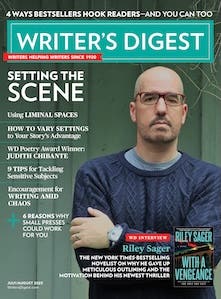A Look at Revision
Revision is tough. But you hear it all the time: writing is revising. And I know this is true. Some people love rewriting, writer Bernard Malamud called revising “one of…
Revision is tough. But you hear it all the time: writing is revising. And I know this is true. Some people love rewriting, writer Bernard Malamud called revising “one of the exquisite pleasures of writing.” And then there is the rest of us (some of you may love it, too?). It’s not that I detest the process-- I know that through revision the heart of the story beats stronger, the characters become real and specific, the structure becomes seamless, the themes deepen--it’s just that I just don’t think I’ve found a good method yet, a good plan of attack. I’ve tried many ways. I’ve tried retyping the whole story from beginning to end, revising while I do this. I’ve also tried side writing from a different POV, or free writing with the chance that I’ll stumble across something new and alive.The list goes on… I actually asked my teacher, no, begged him for some revision advice recently and he said, Hmm, I don’t even really know how I revise, I’ll have to pay attention next time. What is it that I do? I think this speaks to something.Perhaps revision is so specific to each individual, so mysterious, so multi-layered that it’s difficult to even explain, to teach. It’s something you have to learn on your own; we all approach the craft differently, why wouldn’t we approach revision differently? There’s also this: revise a story too much and you drain it of its blood; you lose its raw energy. Or, you end up with something different, not something better. And when the heck do we know we’re done?
For now, I’ve gone back to some writing books for advice. The Modern Library Writer’s Workshop, by Stephen Koch, offers these basic suggestions for rewriting:
1.Do not polish a mess—polishing can’t give your story shape. It can’t show you what action you need, or reveal characters’ roles.
2.Revise for Structure—redrafting should begin with solving the problem of sequence.
3.Develop the Undeveloped—your second encounter with your own prose should make you see more, not less. Everything needs to be more vivid, more coherent, more powerful.
4.Revise for Plot—find and get down the exact ways the events in your stories happen, and how those changes drive your story forward.
5.Revision for Clarity—the single most destructive force dooming most first fiction is simple unreadability. It is impossible to be too clear. Always, always make your writing a little more clear than you think it needs to be.
I write these suggestions down for myself as much as I do for you… It’s a starting place, at least. Come to think of it, I did once get some important advice about revision, but it was more advice concerning an attitude towards the process. A mentor once said to me: “Think of it as adding power to power.” I like that. It reminds me that this is about creating, about art. That there is no real science here. We can only do our best, adding power to what we’ve already richly imagined.
“You aim for what you want and if you don’t get it, you don’t get it, but if you don’t aim, you don’t get anything.”
-Francine Prose


